The Shipborne Rolling Vertical Landing (SRVL) is a British endeavour—a capability at least a decade in the making—that will allow pilots to return to ship with more stores on the aircraft after a mission.
It is a process designed to land jump-jet aircraft that uses both the vertical thrust from the jet engine and lift from the wings, thus maximising the payload an aircraft can return with and stopping the financial waste that comes with dropping expensive weaponry in the sea in order to land vertically.
Since June, The F-35 Patuxent River Integrated Test Force (ITF) team has focused on live flying workups refreshing their skills on day and night field carrier landing practices, ski jump takeoffs and vertical landings in preparation for the arrival of HMS Queen Elizabeth.
The team also conducted rolling vertical landings in preparation for another unique British development, according to a recent release.
“[Rolling vertical landings] are an important phase of the workups because another unique aspect of going to the Queen Elizabeth Class carrier is that we will be conducting experimental testing of a novel recovery landing technique—the Shipborne Rolling Vertical Landing” said Royal Air Force Sq. Ldr. Andy Edgell, FOCFT (FW) lead test pilot at the Pax River ITF.
“SRVL tests are truly experimental. It involves landing a fast jet onto an aircraft carrier with forward relative speed but without the braking assistance typically provided by an arresting gear and hook. It’s going to be a really rewarding moment for British aviation to watch that procedure actually take place.”
It can also reduce the level of wear on the lift engines and extend their operational life. Similarly, it can reduce the amount of wear upon the deck surface of a carrier caused by the downward jet exhaust from vertical landings.


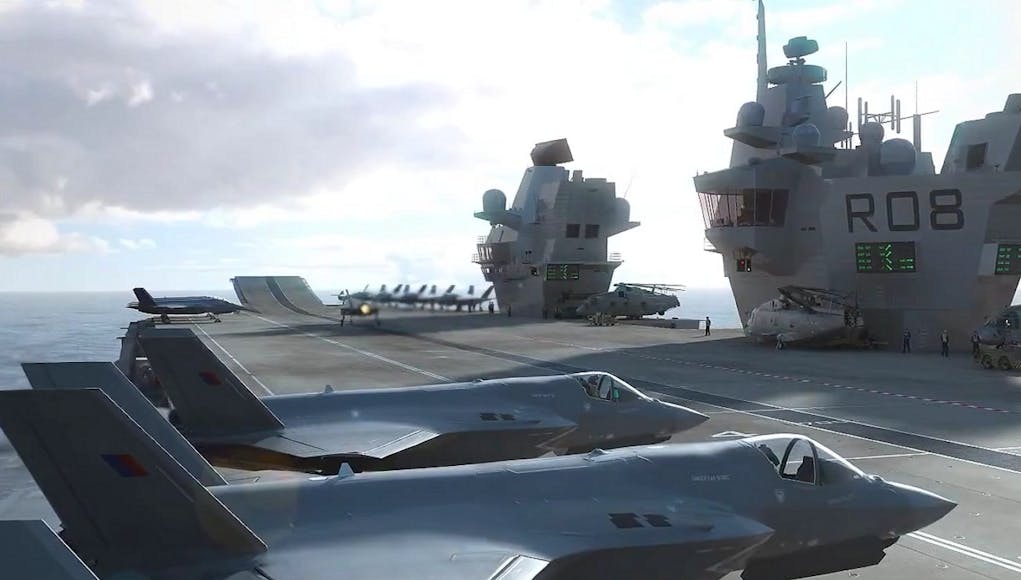


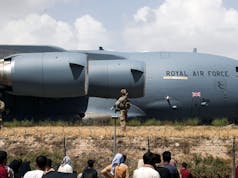

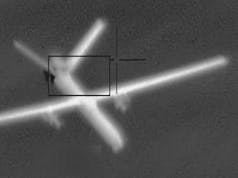
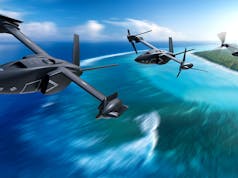
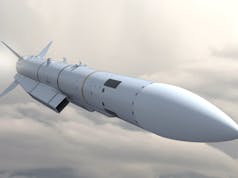
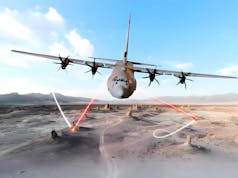



Can you imagine if we had the same funding that the US has?
The British engineering would explode with technology and expertise like no others have seen
A couple of questions for the Naval aviators. Did the Harrier and does the F35B use a mix of VTOL and conventional configuration for takeoff. I remember clips of the Harrier take offs from HMS Invincible and it would appear they power up the engine just before takeoff to full thrust and then chocks away!! Again it appears the engine is configured conventionally-is this the case? If so then could not an F 35 C takeoff up the ramp of the QE fitted with arrestor wires for the landing? Also the SRVL technique looks impressive but if the landing gear on the F35B was strengthened could they not then just land conventionally with arrestor wires? i know there must be some serious flaws in this logic but would appreciate comment from FAA types.
F35b uses its fan during take off from USN LHD. Just as Harrier vectors thrust aft and slightly down when take off. They have to be full power take off as these are still large machines. Remember the other factor is speed of the wind over the deck too.
STOBAR is just darn inefficient.
..a mix of VTO and..
The SRVL was actually developed for Harrier by BAE. To save munitions and enable operations in hotter climates. The automated SVRL was actually tested on, I think, Lusty (?? stand to be corrected – certainly one of the Invincibles) with Harrier so the kit and software was one of the things that BAE brought to the F35B table.
There was a significant upgrade path that had been developed to keep the Harrier up to date(ish) for the ten years it had to bridge before the F35B came into play.
If the landing gear was strengthened then it would add more weight which reduces range/payload.
In take off, the Harrier did use some mild vectoring of thrust but as you as you say the main thrust was straight out the back, the vectoring was manually changed during the take off profile. One of the reasons the QE runway is so long is that it allows the F35B to get up a lot of speed and therefore lift over the wing (added to forward speed of carrier) without having to vector too much thrust downwards which is very fuel inefficient.
Yes, you would gun the engine breaks on and release them to get max use, acceleration, out of deck length.
The main advantage of the B variant is that carrier landing certification is easier and cheaper. The idea of being able to surge RAF B’s onto a CVF in an emergency would be a non starter with the C variant as it takes a lot of skill practice, cost & risk to learn to pick up arrestor wires etc.
This is all a lot better thought out than a lot of armchair commentators give credit for. Some very bright people have achieved an awful lot through some very very hard work (and thinking) on a (comparatively) tiny budget.
It would be possible(ish) to add arrestor wires to QE and PoW. Certainly a lot easier than adding CAT’s but where is the advantage unless you can get the laden item (plane) to fly off the flight deck again? As it is the F35B’s simply don’t need arrestor wires and it adds a lot of complexity for really nothing as there is a better solution SRVL that will be functionally demonstrated, we all hope, in the next few days.
The Russian Carrier Admiral Kuznetsov apparently did/still does allow the Sukhoi to take off unassisted using her ski ramp-apparently a risky manoeuvre!?
Yep, and it also can’t carry many weapons or fuel in order to achieve this… It is a pretty pointless and dangerous operation.
still, i do wonder how mig-29’s and su-33’s can manage to take off from stobar carriers and yet for some reason rafales/f18’s/typhoons/etc can’t….. especially considering some have much more powerful engines.
granted its not gonna give you as much payload, but surely they are capable of it? also i acknowledge that getting them back aboard is another matter entirely…. then again, the us navy landed a c130 on a carrier in the past….
Who says they can’t?
well, its always portrayed that the only aircraft that can take off from carriers are carrier specific aircraft….that’s why i’ve always wondered…. cause the thrust to weight ratios on things like the typhoon certainly indicate they should be able to get airborne!
An F18E has just completed trials at Pax River using the same ramp as the F35B. admittedly the aircraft was flying in a clean condition (no underwing tanks or weapons). It has a very similar power to weight ratio as the SU33.
It does begs the question of why the trial? Has someone had an “on the toilet” what if moment, though I don’t expect any F18 trials on the QE in the near future as landing and stopping may be a bit of problem!
I believe this was test to prove the F18 could be used on Indian carriers
Hi Geoff, don’t know about the Sea Harriers but the GR7/9s definitely did a version of the rolling vertical landing as well as rolling vertical takeoff. This is where the nozzles were pointed back initially to get the aircraft moving then pointed down at full power at 70 degrees. This sought of hopped the aircraft in to the sky whereby the nozzles were progressively pointed rearwards for proper forward flight. The technique was a carry over from the GR3 days when they were deployed to use bits of road/track etc. If the road/track was long enough the GR3s would do the reverse. Amazing to think that the technique was completely done without the aid of a computer. As per the F35, it placed less strain on the airframe and engine when landing from the hover, plus you could bring back some stores without having to dump them.
The next big question is will the F35 be able to carry out the “VIFF” manoeuvre?
Somebody I bet must have done a break down somewhere of F35b vs F35c for maximum take off weight, weapons load out, range etc.
I shall have a look later. The fan and the complex linkages can’t come for free.
From a random search of the internet:
Take off weights (max)
F35B – 60,000 lb class (27,200 kg)
F35C – 70,000 lb class (31,800 kg)
Not sure of its validity:
https://www.quora.com/How-much-bigger-payload-can-an-American-F35-carry-than-a-UK-carrier-f35-b-carry
The F35B will definitely carry less for two reasons, it has a smaller wing thus a higher wing loading than the C model but it is also carrying around the dead weight of the lift fan, drive shaft, fan doors and actuators. This lowers the maximum weapon load that the aircraft can carry. Unfortunately the lift fan is redundant in forward flight, unlike the Harrier’s forward two cold nozzles which aided forward flight.
Undoubtedly. I just had seen the figures for the two variants compared. As I have just said below F35b is good news for us, but seems to be far too much aeroplane for the USMC. If F35b wasn’t an option I wonder if the carriers would have been procured?
This is interesting. Found while I was looking about…….
https://foxtrotalpha.jalopnik.com/7-things-the-marines-have-to-do-to-make-the-f-35b-worth-1560672069
The article is interesting. It basically details what we Brits will gain from the aeroplane. But misses the point that ARG’s business is landing Marines not being smaller aircraft carriers. What the USMC gain from the aircraft to support their key mission I don’t know. If they ever had to land at a place where the F35b’s full range of capabilities were needed there would be at least one CBG in attendance. Good news for us I suppose. If F35 programme was a decade younger and Trump was in office it would be a very good candidate for cancellation. Or should I say it would have probably taken a different form to satisfy the two main service ‘customers’ the USN and USAF. You can see why the big ship navy is eager to look at platforms beyond F35 because it could possibly be a reason to scrap the CVN programme (as many conspiracy bods have suggested).
Talking through your hat again. All the US big ship navy is doing at the moment is getting F-35C’s as fast as it can and extending the life of its legacy aircraft until they can be replaced.
As for the Marines, why on earth do you think they don’t need the best ground attack aircraft flying to perform their missions? Are they somehow second best?
Thanks DaveyB and others. I suspected that the nozzles would be pointed down at the point of lift off but I just thought it would have to be a pretty precisely timed and executed manoeuver with not much room for error
The article does not mention the other massive benefit. The fact that weapons can be brought back if not used. Currently carrier aircraft have to dump most of their remaining ordinance in the sea in order to safely land. This is not only environmentally bad but is also a giant waste of money.
Surely not. You mean to say our Yank friends drop their ordinance in the sea before landing back on one of their million and a half carriers?
i’ve always wondered about that, cause the usmc only do vertical landings on the americas… but i’m assuming the f35 was designed to bring back at least what it can carry internally
They have a tad more money to burn than their penny pinching British cousins. If ordnance needs to be dropped to make a safe landing, it will.
Ron5
The USMC who are purchasing circa 400 F35b’s have annual audited accounts that show they get by on between $25-30bn pa,
They have 180,000 + people and each marine is kitted out with circa $20k of personal kit.
Whilst they admittedly dont fund a navy, or submarine fleet out of this, it is mightily impressive how much good (great) kit they get for what is circa £20bn pa.
Surely we should look to the USMC for inspiration on how to manage our budgets properly.
Not a fair comparison. USMC doesn’t have to run a lot of the big ticket items because USN and USAF does it. Aircraft carriers, nuclear subs, nuclear deterrent, marine patrol, signals intelligence and AWACS aircraft and transport planes and of course the navy are all some of the things our armed forces run which USMC doesn’t need to because it’s provided by different services. Our armed forces aren’t less economically run the their US equivalents by any means. The US wastes huge amounts of money on trials and testing for things which never go anywhere.
I would agree that we should look to the USMC for inspiration in general. I think they’d make a great template for our armed forces in general.
You did also forget the nuclear deterrent part of the submarine fleet, by which I mean all of the support structure surrounding the submarines, their reactors and trident. The USMC also benefits from USAF air lift and tanker support (if not using USN) and enormous economies of scales with the other branches when it comes to common equipment. The USMC does a lot with what they get, but they also don’t have the kinds of overheads that the MoD has…
Ordnance. Ordinance is something completely different.
Lee1 – I thought that Weapon’s Dumping was just a trait of the Harrier under certain atmospheric conditions – ie in hot climates ? Id be very surprised if the F35b has to follow suit,it should have greater margins for landing weight I would have thought.
I believe the short take off ( lift fan) technique will be exclusively employed, although QE class have far larger flight decks (and of course the ski jump) compared to the USN amphibious ships.
I would guess that the software has been specifically designed with this STO take mode in mind for USMC purposes..
It has the advantage of being a safer method of launching, allowing slower take offs and more control.
The comments about less strain on the lift fan are hard to understand. The lift fan will be going at full throttle during a rolling landing just as if it was vertical. No difference. And for the same length of time.
No it is not going full throttle on a rolling landing. On vertical landing the aircraft has to hover for some time while it lines up and manoeuvres into place. On a rolling landing this is not needed so the thrust is a lot less and the landing is quicker.
Oh yes it is!!!
No!
If it was on full power it would not be descending!
Huh? It’s because the fan alone cannot support high weights that the rolling landing was developed.
Depends on what load the aircraft is carrying. Forward flight of SBRVL means the wings provide lift so the fan a vectoring nozzle could provide less lift ie lower thrust. If the aircraft is heavy then fan and engine could be using full thrust
Not at all.
If the aircraft can be fully supported by fan, it will land vertically. Vertical landing is lower risk because there’s fewer things to go wrong.
If it cannot, then max fan power will be boosted by wing lift for a rolling landing.
If that’s the case then yes full power would be used. But have you confirmation that we will use SBRVL only when the load exceeds those required for VL? Risk of SBRVL increase with sea state, weather etc. and a heavy aircraft increases the risk also as your have more inertia. Stopping the aircraft on a wet deck is the biggest risk. I would like to think once all the data is analysed parameters would be set as to when a SBRVL is used over a VL.
Why would a more risky SBRVL be used when not needed?
Why wasn’t SBRVL used for the Harriers?
On the Harriers it was only trialled in 2007/8 but quite later the UK harriers operational life. I would imagine the Harrier would have required a number of upgrades to use SBRVL. It landed on the CDG but I don’t believe it landed on UK carriers and only flew approach trials.
https://www.theengineer.co.uk/issues/december-2008-online/vaac-harrier-test-success/
As for risk, that’s why you would analyse the data and draw up parameters. Once they have data they can properly assess the risks. Running a lift fan and engine at full power during a VL has its own set of risks. If you reduce the main risk, which is stopping the aircraft in a controlled manner then who’s to say its more risky than a VL. The fact is neither of us can state the one is more risky than the other in certain conditions.
@ Ron5
You keep saying things like that and I keep proving you wrong and then you fail to answer my rebuttal.
No the USN is not going hell for leather for F35c quite the opposite in fact. The project is progressing yes. But it is more because nobody has stopped it. Each passing FY FA18 and new technologies seem to be providing better value.
And there is an awful lot of concern among the UMSC and commentators that F35b (and even MV22 and CH53 Kilo) are putting undue strain on their budget when their alternatives for providing close support fires. The USMC job is light infantry across the beach. Undoubtedly F35b will provide more than sufficient at the job. But it is too much aeroplane for the role, too expensive, and too large.
Why not do yourself a favour and not respond to any of my comments? I am sorry this site doesn’t use something like Disqus so I could switch off your childish one dimensional dripping but I can’t.
I might talk through my hat. You talk through your other end.
USMC aren’t a light infantry force. Theyre a quick response self contained expeditionary force. They arrive in theatre first and contain the situation whilst the wheels of the US military get into motion. They have their own tanks, attack helicopters and air support. They need the F-35 because they aren’t guaranteed to have air support from other services when they arrive.
I sort of agree – why do the USMC require a 5th gen stealth aircraft? On the face of it you’d like to think that an upgraded Harrier or F18 would be sufficient, especially as they can carry more ordance.
However, the F35 brings a lot of goodies to the table. For starters the USMC will be working in concert with a CBG with perhaps an additional 80 F35s, I think the Wasp class can handle at least 10 F35s along with all the required rotorcraft. So if we are talking the traditional USMC beach invasion. The F35s will be clearing the beach head paving the way for the rotorcraft and landing craft. For this you want the best aircraft available, as your opponent will be near max strength with a full arsenal of weapons. One of their first objectives will be clearing the field of enemy air defences to allow the rotorcraft to make their approach. The CBG’s F35s will be mostly maintaining combat air patrols with the odd strike mission. Therefore, it makes sense for the USMC to have the F35B with its inherent stealth to attack enemy air defences as this is a lot safer than using a Harrier or F18! On day 2 or 3 there may be a case to use the less stealthy aircraft as hopefully your opponents SAM/SPAAG arsenal should be severely battered by this stage of operations.
New technology tends to be an improvement on what went before. The concern in some quarters with some is that the USMC has gone from a ground centred force where air supports, to a de facto air service with a ground element. Rotary craft are useful but the idea that a company of light infantry can be dumped a few hundred miles away from a task force is giving some pause. F35b has already impacted on USMC budgets for other equipment programs. There is concern that there is now mission creep and overlap with the capabilities of the CBG. As I said above somewhere if 5th gen fighter capability is needed then one CBG will be in attendance. Even in a 40k tonne hull like a Wasp space is at premium even in an ARG where there will be addition large hulls. F35b is a big aircraft. I understand why some of you here get excited about F35b, but I more interested in the more boring side of things like logistics, economy of fire and effects. F35b is very capable aircraft. I and many others are just questioning whether it is the right plane. Saying it is technically more capable than its predecessor isn’t an answer. I have said before here if we put the ‘age’ difference between Harrier and F35b and just look at class then it those terms Harrier is being replaced with, to use one of its contemporaries. a Phantom class aircraft. One also appreciates that harrier was squeezed and pushed and delivered more than its humbler CAS origins suggest it should have done. But seeing those extra capabilities as a starting point while ignoring the core mission may be the undoing of the project. And are we not told these days it is effects not platforms that count? It reminds me of some phones that are great personal computers but are crap phones.
Also if 5th gen were needed it would require a CBG (or two) to win the air space before an ARG (or two) would be able to make a landing. Considering the CBG will have squadrons of F35c with their capabilities then it has to be asked why 6 to 10 F35b would be so vital against the 80 plus aircraft in the CBG (or twice that)? Yes you can never have too much of a good thing but………. At times I am surprised they didn’t off the USN submarine service a version a la UFO’s Skydiver…….
Though as I said F35b is good news for us because of all things that make it probably too much for the USMC.
You obviously have a very deep and profound lack of knowledge of the US Marine Corps. Presumably because you rely on sputniknews.com for your information.
“F35b … too much aeroplane for the role, too expensive, and too large”
What utter bollox.
I do admire how you never say anything yourself just assert you know better. It is your super power.
But seemingly know everything there is to know about everything without demonstrating any experience of your own or knowledge.
What exactly do you get from being a tiresome troll?
As I have asked before why not just not reply to my posts?
I pity you.